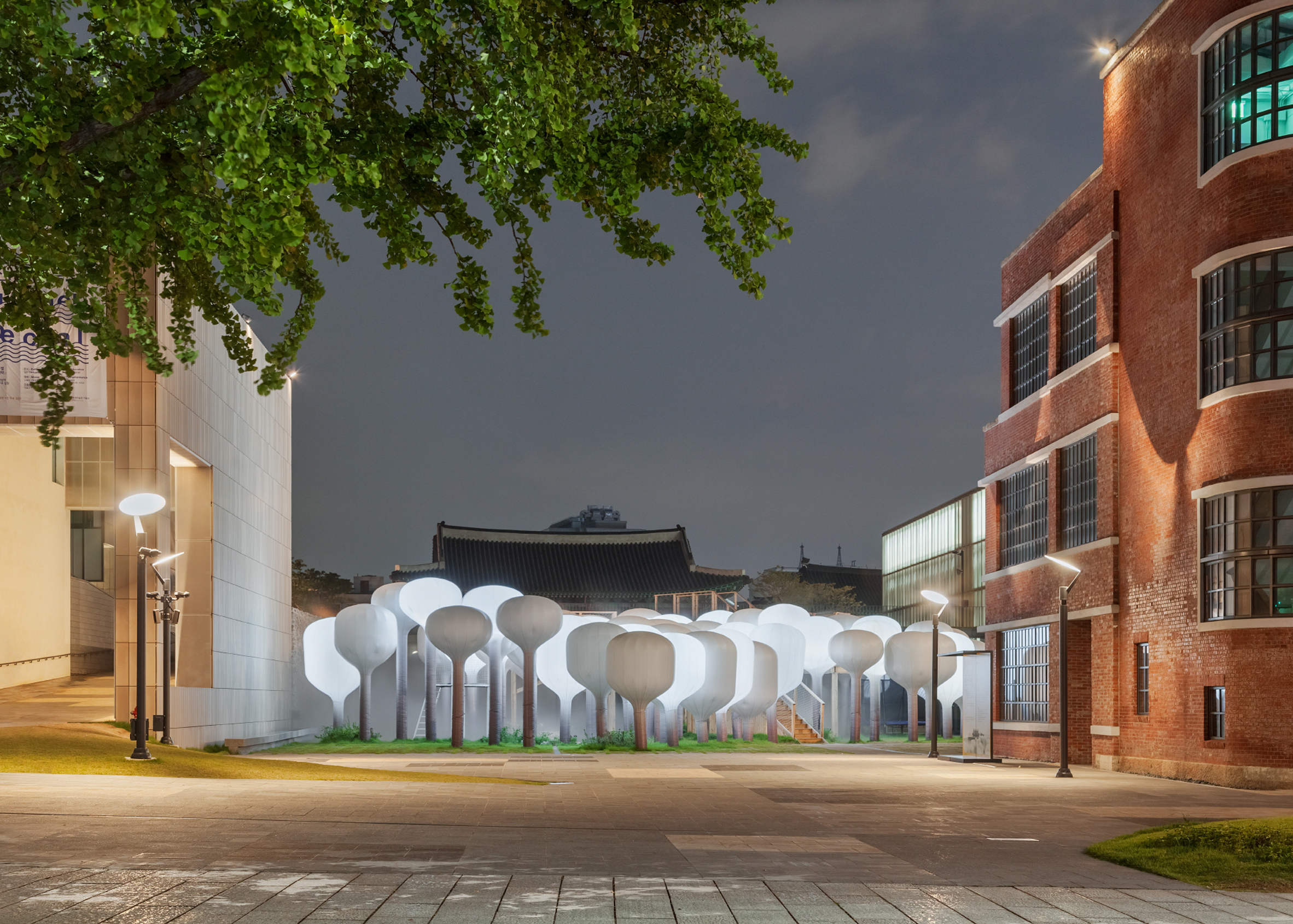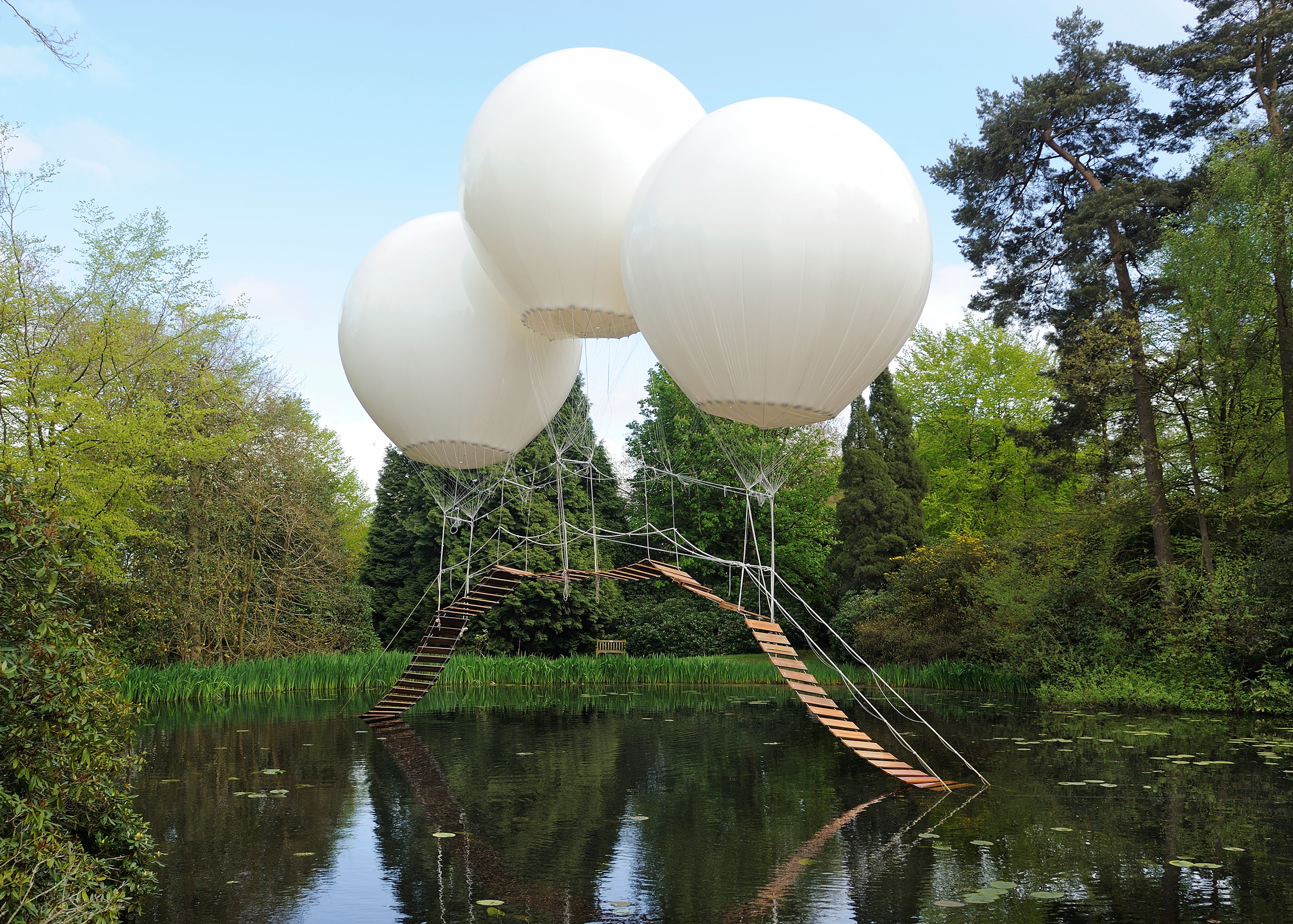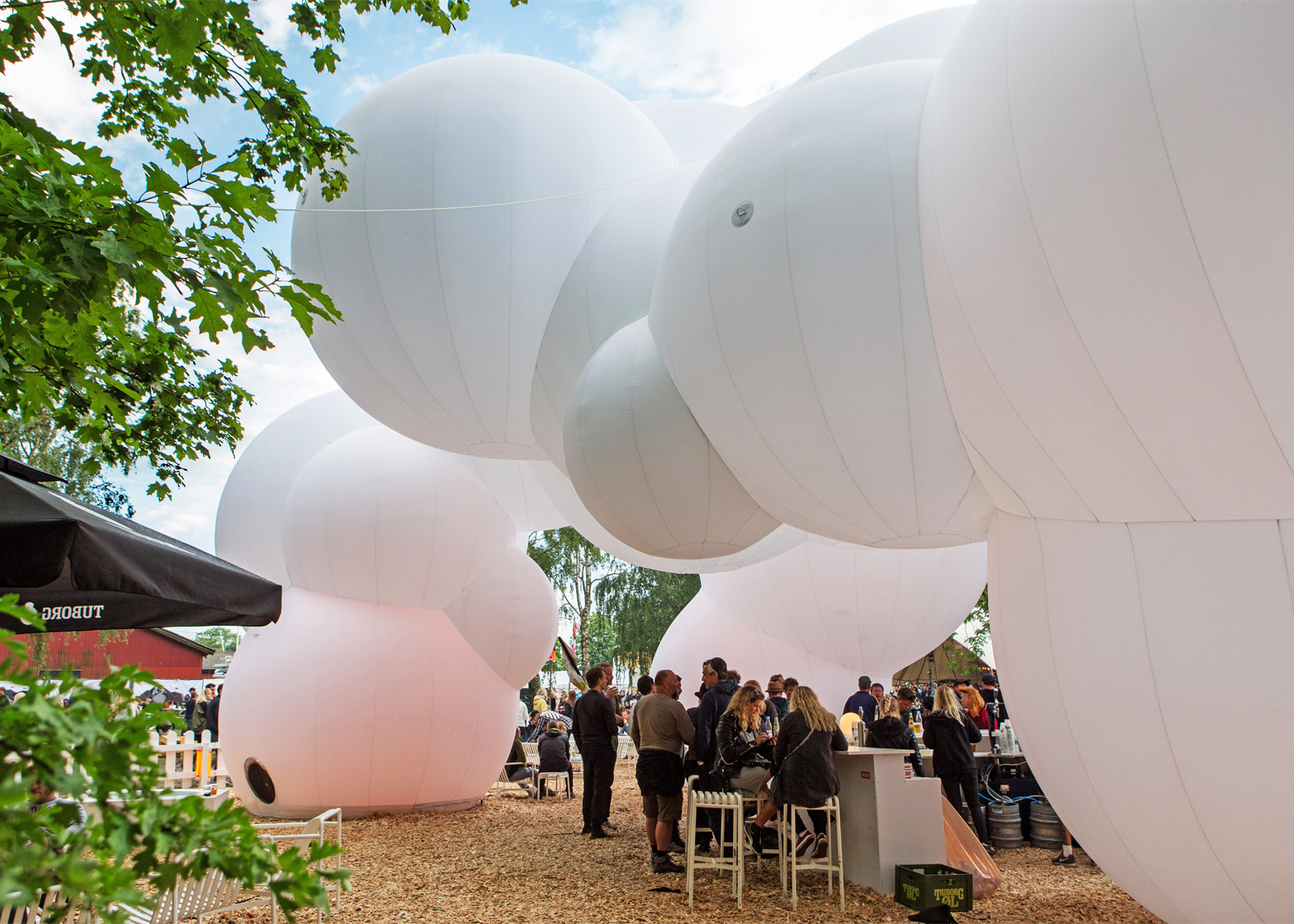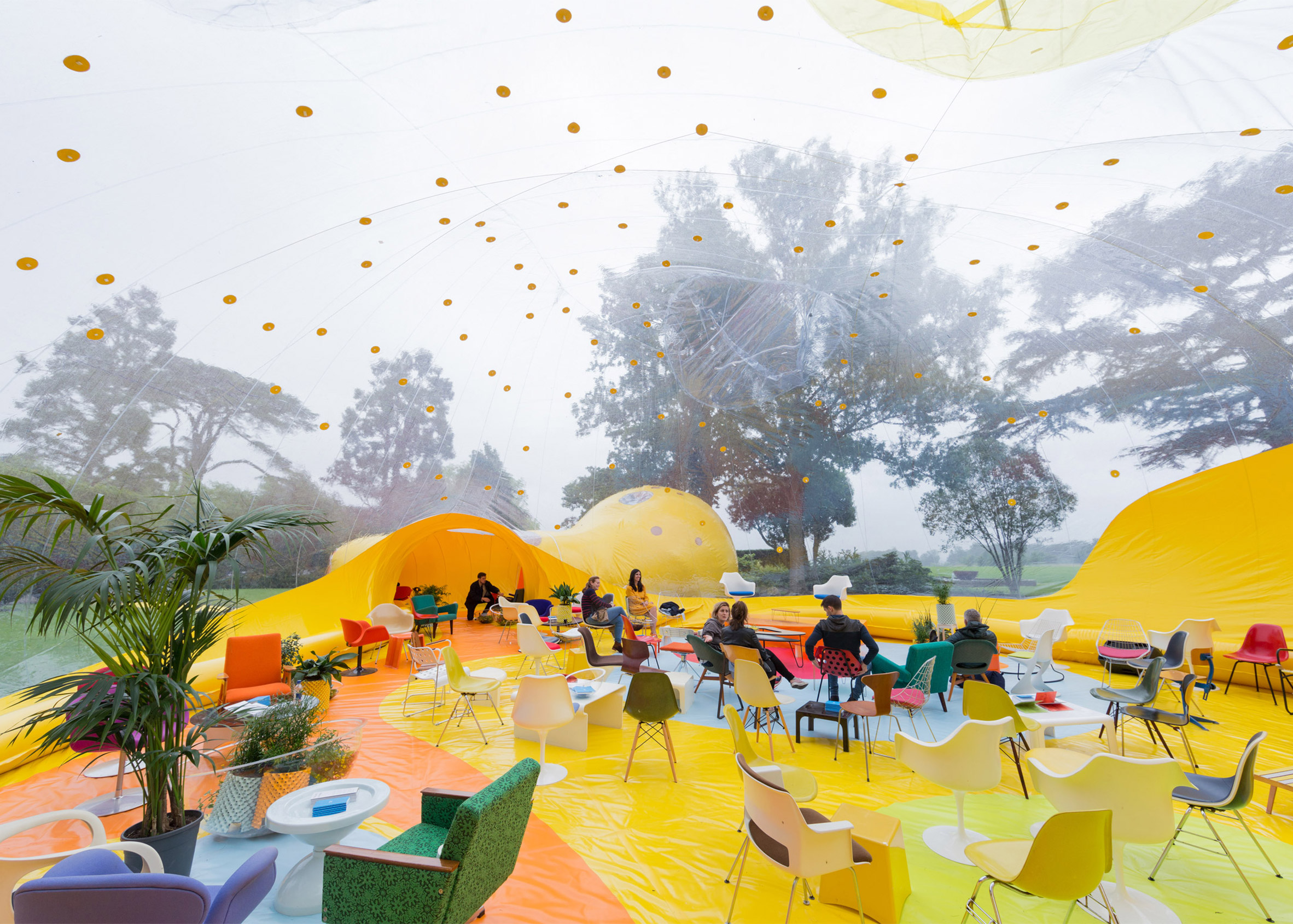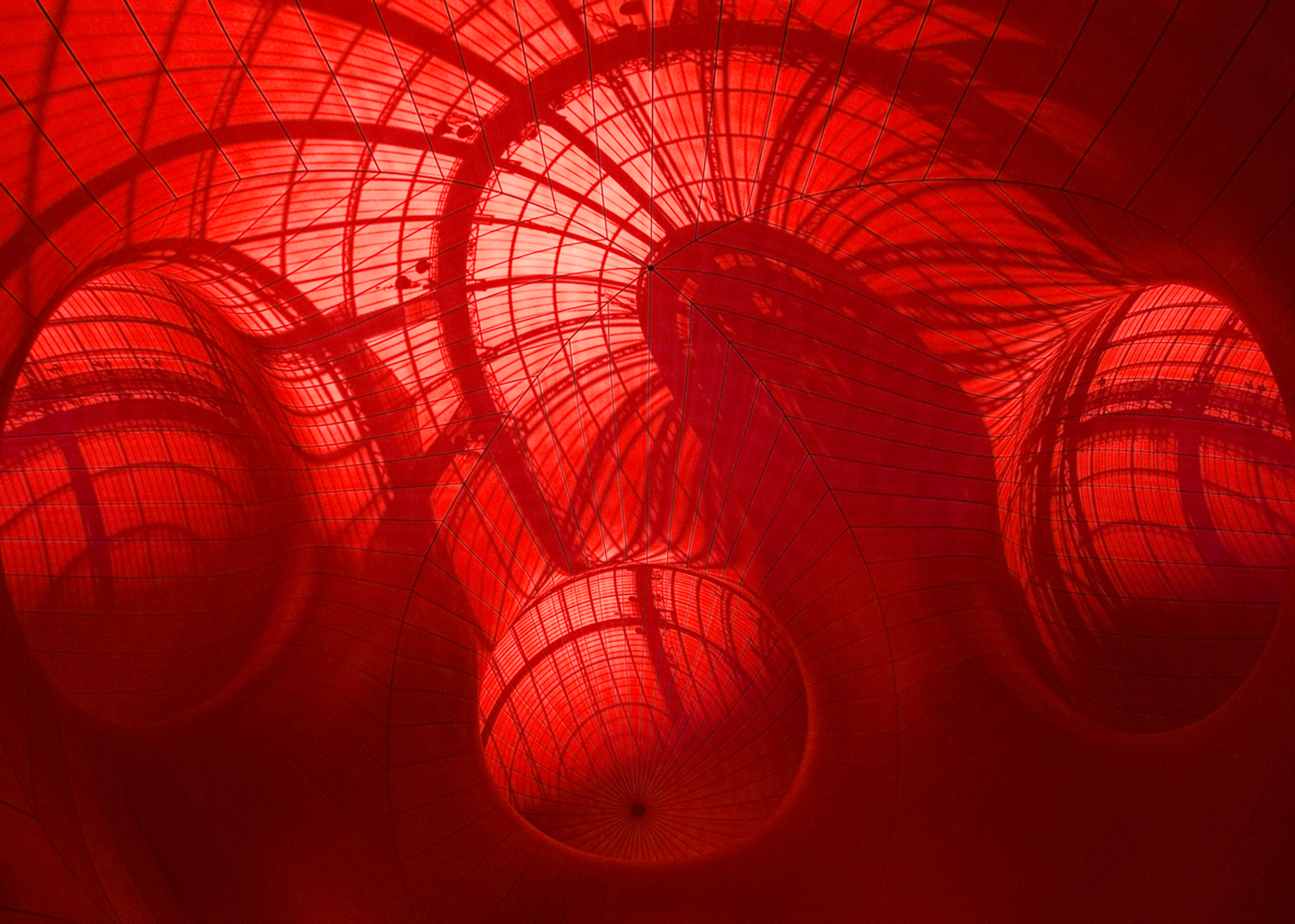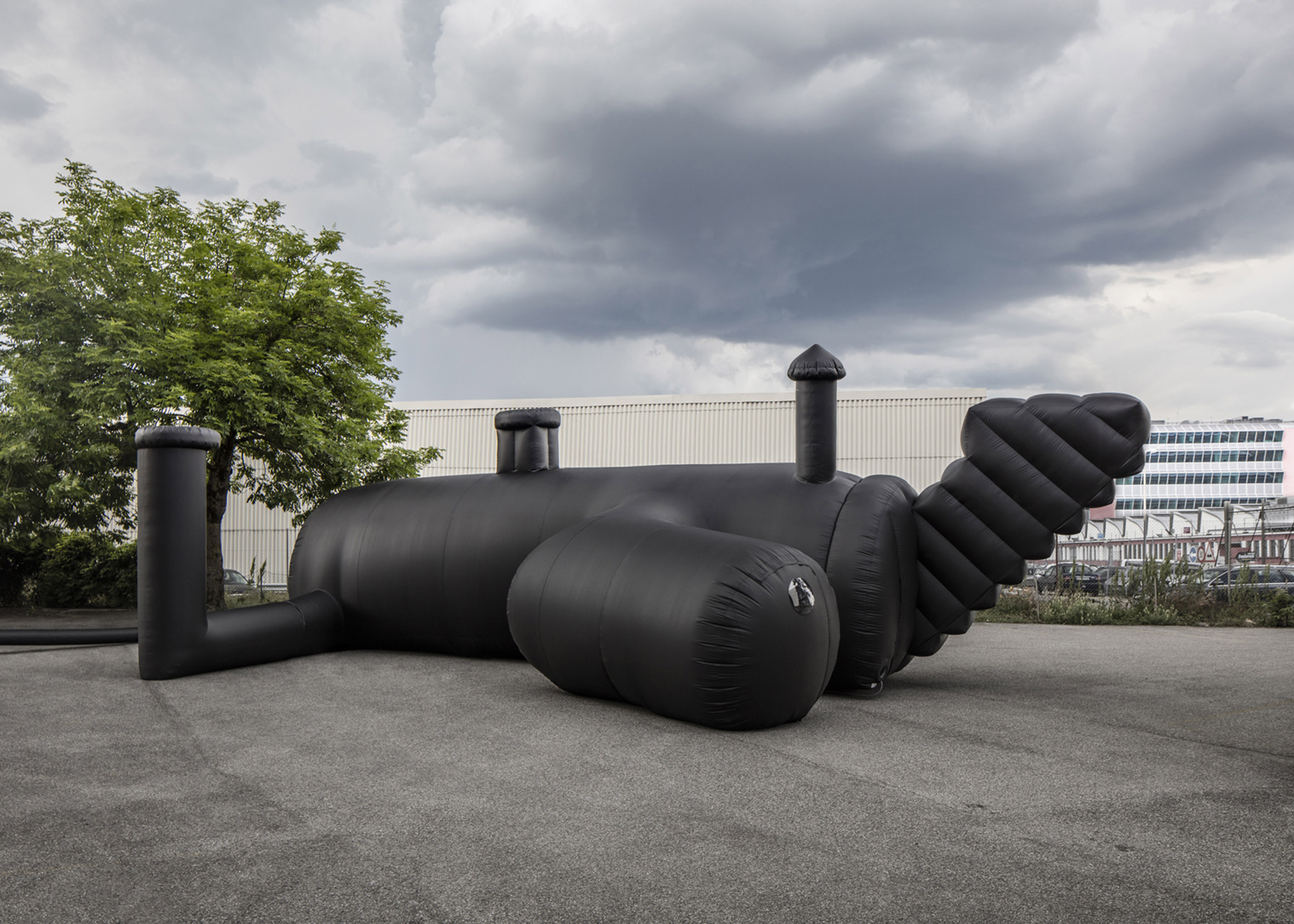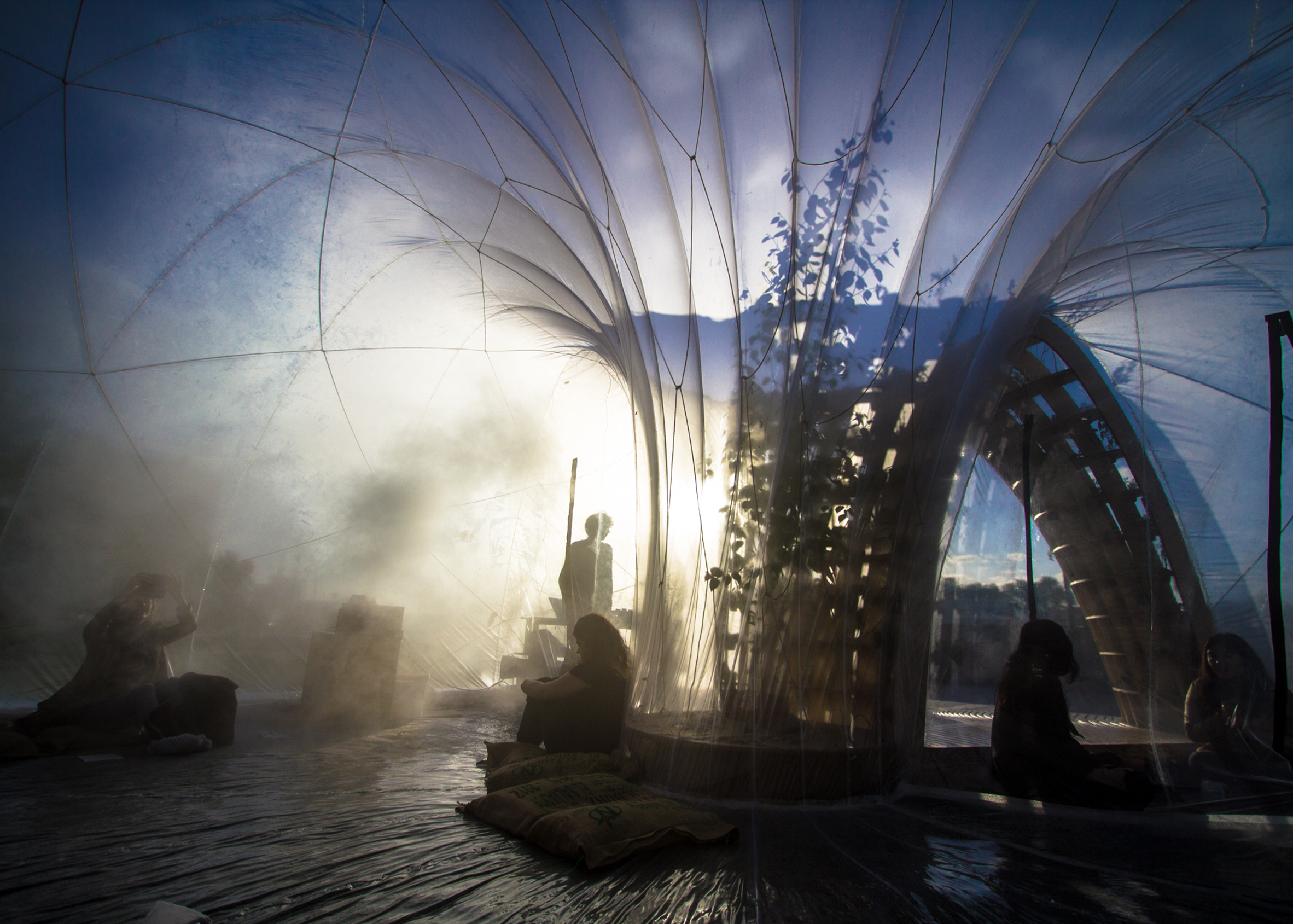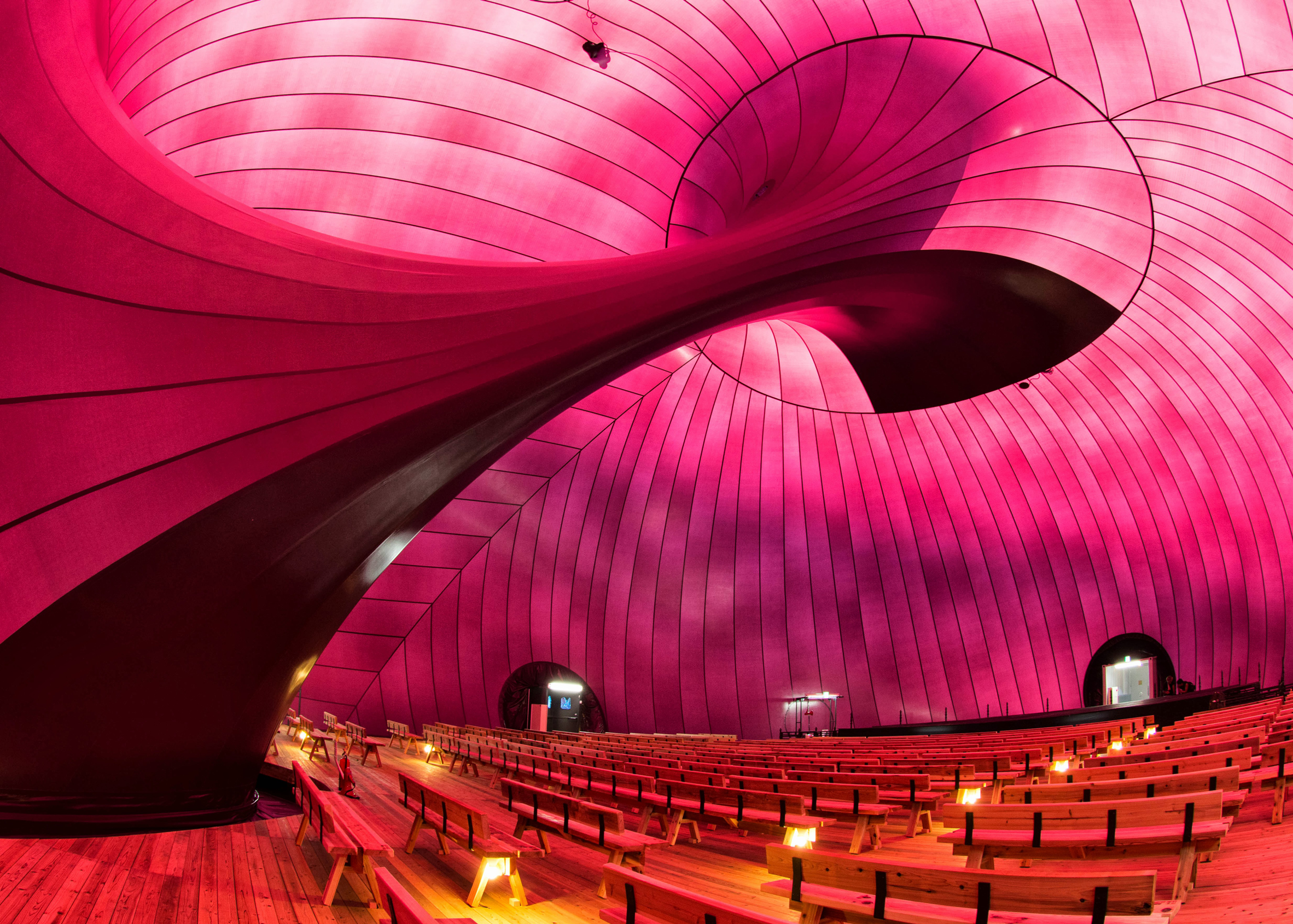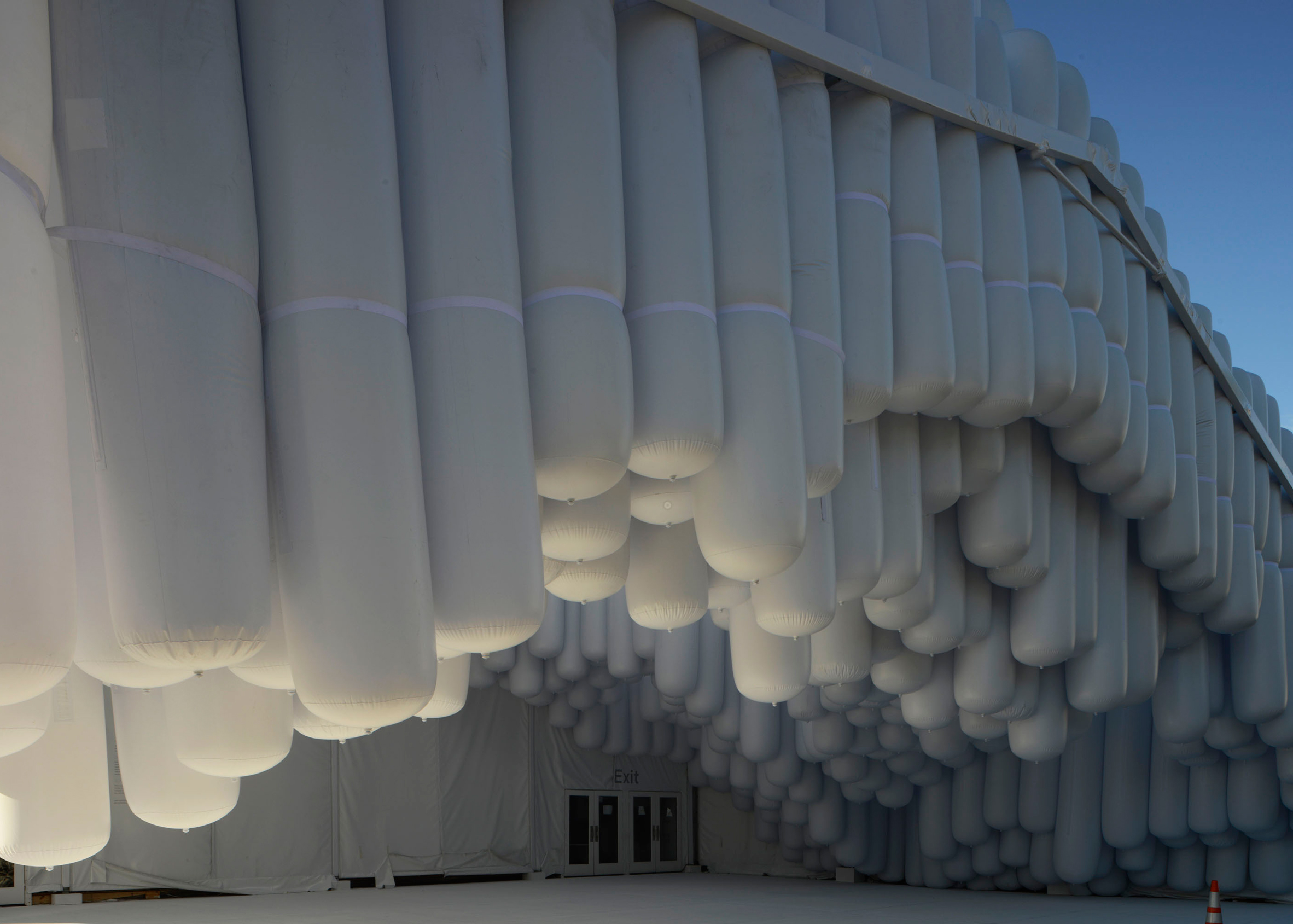Inflatable buildings are back in fashion, and being created for all kinds of functions. Here are 10 of the most inventive examples, including a mobile concert hall, a black PVC nightclub and a field of giant mushrooms.
Shelter, Switzerland, by Bureau A
Swiss studio Bureau A created this inflatable black PVC nightclub to host the annual party of the Federation of Swiss Architects.
The blow-up building contains a bar and a dance floor, as well as an assortment of inflatable furniture that includes seating, tables and a DJ booth.
Second Dome, UK, by DOSIS
This giant inflatable events space was designed by Spanish architecture studio DOSIS. It has a bright yellow base, while the upper is transparent and covered in matching yellow polka dots.
"Pneumatic structures are unique – no other type of structure can be assembled so quickly and also have the capacity to span large areas with a thickness of less than a millimetre," said architects Isabel Collado and Ignacio Peydro.
Find out more about Second Dome »
Skum, Denmark, by BIG
Bjarke Ingels' firm BIG designed a "bubble-like cloud pavilion" for this year's edition of Denmark's annual Roskilde music festival.
The white pavilion went from flat pack to fully inflated in just seven minutes, creating a bulbous canopy across the serving area and seating of a VIP bar for Danish brewing company Tuborg.
Horticultural Spa and Apothecary Experience, UK, by Loop.pH
Scented vapour was pumped inside this inflatable plastic dome that London studio Loop.pH installed by London's River Thames.
Intended to replicate the atmosphere of a traditional bathhouse, the inflatable structure featured a latticed birch plywood arch at its entrance, with pot plants set into the pockets.
Find out more about the Horticultural Spa and Apothecary Experience »
Shinseon Play, South Korea, by Moon Ji Bang
This field of mushroom-shaped inflatables was created by Korean architects Choi Jangwon, Park Cheonkang, and Kwon Kyungmin for the inaugural Seoul edition of MoMA's Young Architects Program (YAP).
Located outside Korea's National Museum of Modern and Contemporary Art, the installation was based on the the Korean myth of Shinseons – hermetic creatures said to live on top of high mountains or above clouds.
Find out more about Shinseon Play »
Ark Nova, Japan, by Arata Isozaki and Anish Kapoor
Two years after the major earthquake and tsunami hit Japan, architect Arata Isozaki and artist Anish Kapoor unveiled this inflatable mobile concert hall to tour affected regions.
The 500-seat performance venue was designed to stage performances ranging from orchestras and chamber music to jazz, theatre, dance and art.
Find out more about Ark Nova »
Leviathan, France, by Anish Kapoor
Before teaming up with Isozaki on Ark Nova, Kapoor created this trio of huge orbs inside the Grand Palais in Paris.
The three 35-metre-high balloons featured an opaque, dark purple skin. But when visitors climbed inside, they discovered a womb-like red space with translucent walls.
Find out more about Leviathan »
Peace Pavilion, UK, by Atelier Zündel Cristea
A continuous white tube twisted and undulated to form this inflatable pavilion that Paris studio Atelier Zündel Cristea installed in a London park in 2013. Visitors could walk and sit underneath, or climb on top.
"The design of the structure is a simple topological deformation of a torus and the shape was mathematically generated," explained the architects.
Find out more about Peace Pavilion »
Drift, USA, by Snarkitecture
Snarkitecture used hundreds of inflatable sausages to cover the facade of the Design Miami collectors fair back in 2012.
The New York studio bundled together weiner-shaped vinyl tubes of different heights to create a shaded social space at the tent's entrance. Designer Daniel Arsham described the effect as "a sort of reverse landscape".
Pont de Singe bridge, UK, by Olivier Grossetête
Three enormous helium balloons supported the hazardous elevated pathway of Olivier Grossetête's Pont de Singe, which translates as "monkey bridge".
Temporarily installed over a lake in northern England, the bridge was theoretically strong enough to hold the weight of a person. But visitors were banned from crossing, presumably because many would lose their balance and tumble into the waters below.
Find out more about Pont de Singe bridge »

